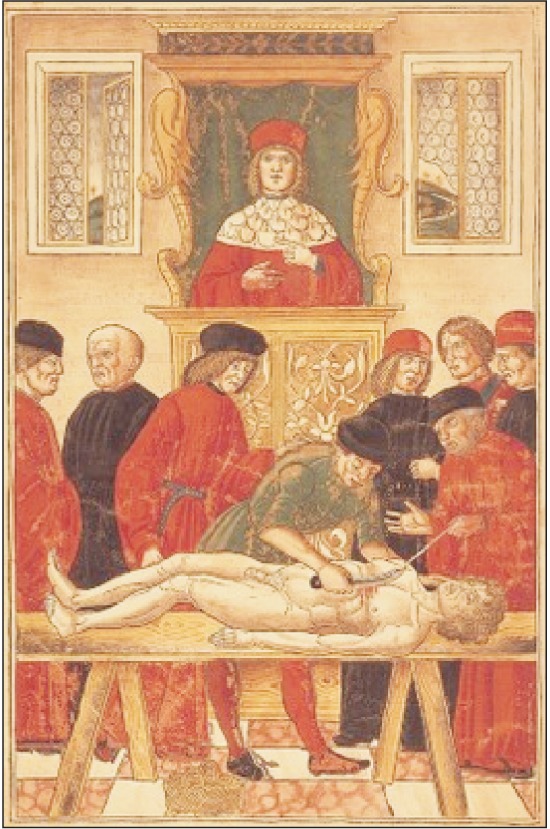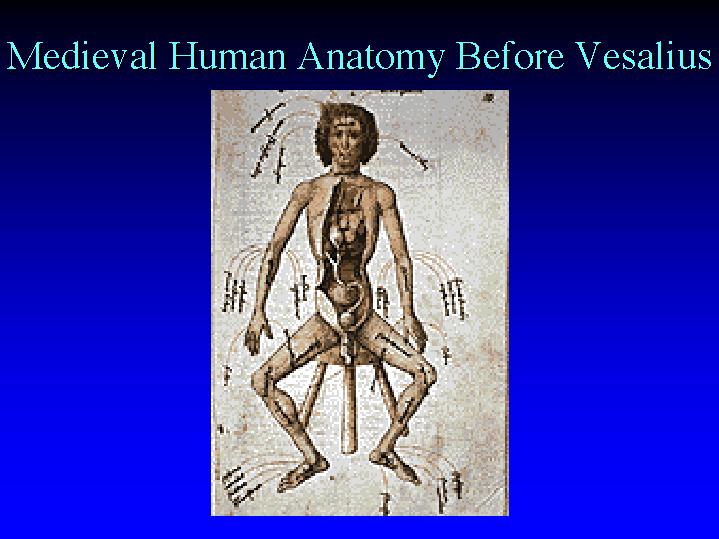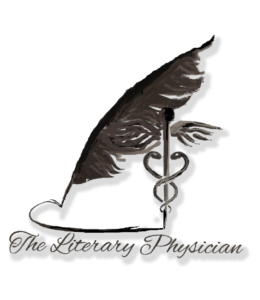How the study of the human body structure became acceptable through the ages:

The material human body has always held a sacred place in a culture’s belief system, particularly when it comes to notions of an afterlife. By the same reasoning, the deceased were required by religious or civil law to be buried promptly after death, certainly within three days. The early civilizations of the Mediterranean area found this especially necessary due to their temperate climates and sanitary concerns, where decay came on rapidly. Moreover, many cultures, such as the Egyptians and indigenous tribes of the Americas, believed that an intact material body was necessary in order to achieve the afterlife. Decay and mutilation of a body were considered anathema–unless it concerned the enemy. Egyptian priests, in the process of mummifying the bodies of high-ranking personages, removed organs that would rapidly rot, such as the intestines, but preserved the main organs such as the heart. However, little was learned of human anatomy except for the most basic positions of vital organs.
In the Roman era, the most prominent surgeon and anatomist was Galen, physician to the gladiators and to Emperor Commodus (of “Gladiator” fame), who based his anatomy on the dissections of Barbary apes and the exposed body structures of the wounded gladiators he treated. The anatomy texts of Aristotle and Galen subsequently were considered as inviolable up until the 16th century, with the spread of the Renaissance throughout Europe. Common errors were made by implying structures found in animals as comparable to those in humans. For instance, a woman’s uterus was thought to have to sides, the right side for producing male children, the left for female propagation, and the female breast was thought to be connected by channels to the uterus (we know now they’re both under the control of hormones). Aristotle believed that venous blood was transferred from the right side of the heart to the left side, which pumps newly oxygenated blood into the arteries, through tiny pores in walls between the heart chambers. Overall, the true nature of blood circulation would not be understood until the 17th century, a little over three hundred years ago! And, the Greeks and Romans often had difficulty differentiating between tendons and nerves, not fully clear on what the functions of nerves were. The brain, however, was known to be the seat of consciousness and thinking.

The texts of Hippocrates (a compilation of many Greek authors) mentions human anatomy with varying accuracy and not in great detail. Certain sections of the texts are accurate enough to suggest that at some point, someone had limited access to an area of a body for cursory study. By the time of Alexander the Great, the Egyptian city of Alexandria founded by him became a cosmopolitan center of trade and learning. It was here that by the 3rd century BC, human dissection had been carried out by the Greek natural philosophers, as scientists were then called, Herophilus and Erasistratus. Celsus, the Roman encyclopedists, wrote several centuries later that the dissections were performed on living criminals who had been condemned by the king. Whether this is true or not, the first valid insights into the true anatomy of the body were established. Aristotle, the great Greek philosopher, conducted his own animal dissections, including the neck bones of a lion, which helped establish the basis, often incorrect, of human anatomy for centuries to come.
Interestingly, in the Middle Ages–the Medieval or “middle period” between the fall of Rome c. 450 AD and the beginning of the Renaissance and fall of Constantinople to Islam in the 15th century–human dissection was performed frequently. It began in Italy around the 11th-12th centuries, where autopsies were mandatory whenever anyone died under suspicious circumstances. Poisoning, whether real or imagined, appears to have been prevalent during that time, leading to autopsies to determine whether the death was natural or a homicide. The Catholic Church even encouraged studies of the human body, contrary to popular opinion, as dissections became widespread in order to teach anatomy. The position of the Church was that a formal study of the human body would allow people to appreciate and revel in the wondrous miracles wrought by God in His creation. Despite the increasing use of human dissections, the knowledge gained by these public exhibitions was limited. The writings of Galen and Aristotle were considered infallible, and any deviation found during human dissection was rationalized to conform to their teachings. In the Islamic world, at this same time, there do not appear to be any teachings in the Quran for or against human dissection, but Galen and Aristotle were held to the same level of reverence as in Medieval Europe.
All this would change by the beginning of the 16th century with the coming of the Renaissance and humanism, where all the teachings of the ancients would be challenged. More on this next time.

